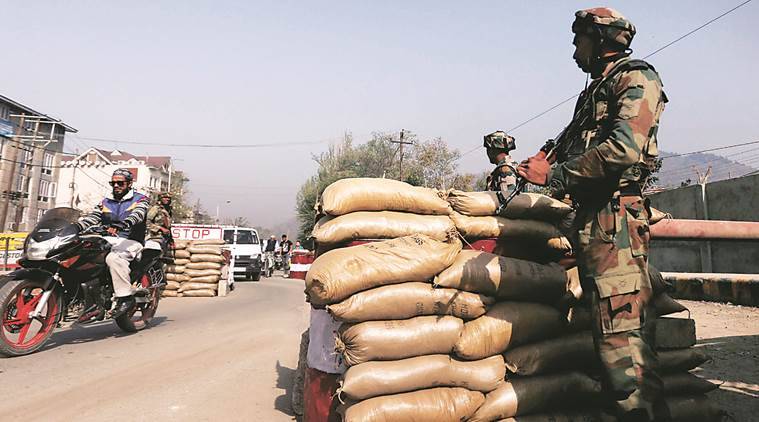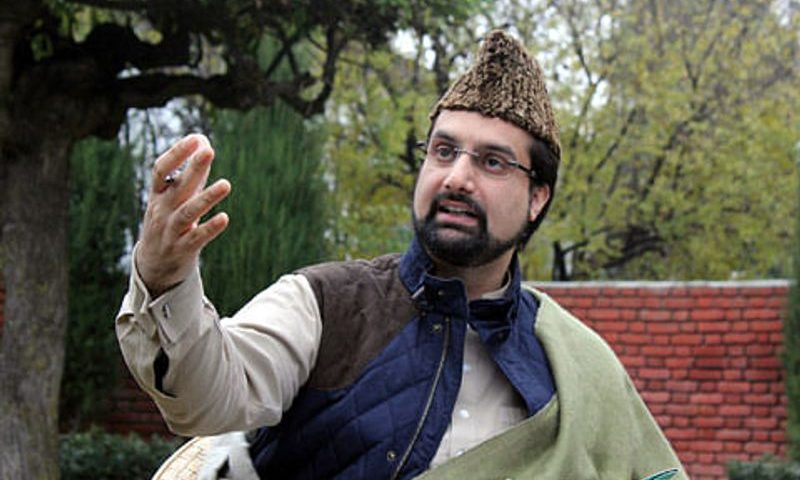By: Shefali Rafiq
On the busy Baghat Barzulla road opposite the Bone and Joint Hospital – men and women are waiting at the bus stop to reach their respective destinations for work.
However, this time the wait for a bus is making passengers uncomfortable as just adjacent to the bus stop have come up two newly constructed bunkers from which a group of military men is consistently gazing through a small window with a gun pointing towards them.
Twenty-seven-year-old Saima Khurshid is one of the passengers. Saima, an employee at a private bank, is waiting for a bus with her eyes down.
“You see those eyes,” she said, pointing towards the gaze of the military personnel at them, “I hate that gaze.” Saima was going for the work when she saw government forces busy with constructing the bunker – getting the sandbags, concertina wires, and the maze together.
“When I saw this, I felt something in my heart. I have depression, so these things affect me badly. Ask anyone with mental illness,” she said.
It wasn’t the bunker that affected Saima. She said that she has been seeing them in every corner of Kashmir throughout, it was something else. Knowing that she will have to face them every day in the morning is what triggered Saima.
She said that people have been seeing these things ever since their childhood, which is why it does not bother them as much as it should. But, “deep down, you can ask any woman, they have had an impact due to the extra gaze of the military personnel.”
A few days ago, 40-year-old Bilkees Bano, came out to buy some medicine at Baghat Chowk. Outside, she saw the military personnel busy constructing the bunkers. When she asked the men walking beside her, she was told that new bunkers were being set up.
“The only thing that changed is that now there is just more and more fear,” said Bano, adding one doesn’t know what will happen. “As of now they are silent, but if anything happens to them, then they don’t spare anyone.”
While walking towards her home, Bano said that during the day, one can see the rush and the moment of vehicles, “but you should come here after 5 pm, you will see how scary this place looks.”
Bano is not just afraid of the gaze. She is afraid of them – afraid that the military can do anything without thinking about dignity and honor. She said that during the day, the military is in their bunkers but during the evening, they are scattered everywhere.
“After 5 pm, they [military personnel] are drunk, so, no one would dare to go out. They don’t know anything about dignity. We have to take care of it ourselves,” she said.
The increase in the number of bunkers and the frisking in the last few weeks has led to fear among the local population.
Bano said that every time she comes out of her house, the bunkers remind her of the nineties when in Kashmir, an enormous number of bunkers had come up.
In the ’90s people in Kashmir would have to stand in long queues to be frisked at the hands of the military.
“In the nineties, one would get scared to move out of his house in the evening, and I think the same time has come back. The fear of the nineties is back,” she said, adding that earlier she would go out even in the evening, but “now, I can’t think of going out after 5 pm.”
Inside the Bone and Joint hospital, there is a silent fear among the people – especially the female attendants who have been in the hospital for the last few days.
Mohammad Sultan, 65, who sells plastic things on a small cart just outside the hospital said that a hospital should be the last place to build a bunker.
“Who can you ask this question to? It is not something that has been constructed for the first time,” he said. “These bunkers are even built at one of the biggest hospitals – Sher-I-Kashmir Institute of Medical Sciences (SKIMS).”
“Isn’t it obvious that we feel scared because our mothers and sisters come and go from this way many times,” Sultan said?
Ghulam Ahmad Reshi and Kulsum from Litter Pulwama have been looking after his sister-in-law for the last 15 days. His wife, Kulsum, who is herself suffering from joint problems, would usually take a stroll and go on a walk in the evening.
“Ever since these bunkers have come up, I am afraid to go out,” she said, adding otherwise she would easily go out in the evening, not too far though.
“Earlier, I used to think there was more military personnel in south Kashmir only, but it seems like the situation is the same in the city as well,” Reshi said. “No matter what, one can never get habitual of these things.”
Talking with us, CRPF PRO Abhiram said that the bunkers have not increased in the city and that some of the old ones were replaced.
“The nakas have been registered where there is high traffic and where people coming from the outer routes can be checked,” he said.
He further said that the CRPF doesn’t do the deployment out of its own choice and that it is always in aid of civil police.
“The nakas have been established to provide a sense of security to the minor as well as the non-locals. Basically to make the city safe,” he added.






